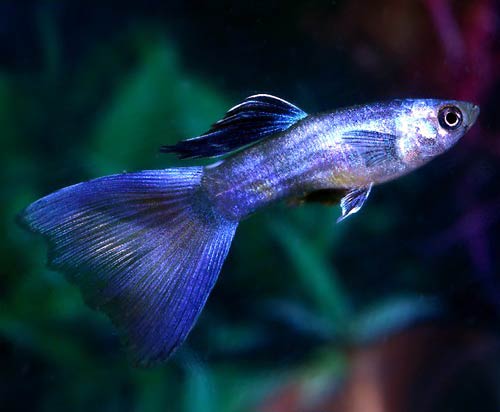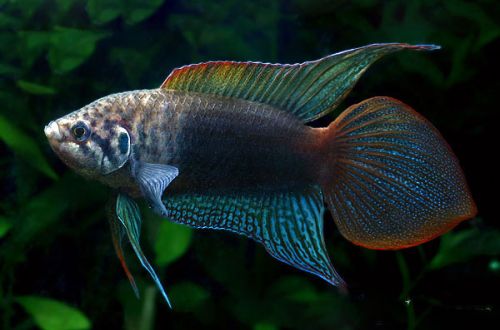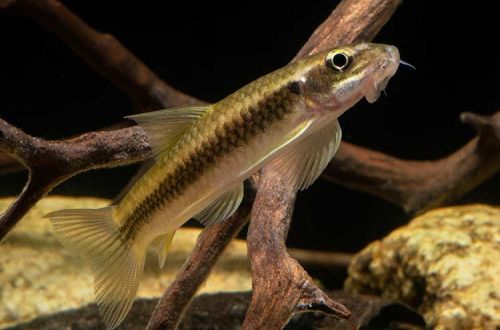
Blue Guppies
Blue Guppies, scientific name Poecilia reticulata (variant Blue), belong to the Poeciliidae family. The name is collective and can denote various breeds that have a predominantly blue color in the color. It is most often applied to European-style Moscow guppies with a solid bluish coloration. In other breeds, the blue color is present only in the drawing or is combined with another color (black, green), for example, only part of the body, such as the tail and fins, is painted in it.

Brief information:
- The volume of the aquarium – from 40 liters.
- Temperature – 17-28°C
- Value pH — 7.0–8.5
- Water hardness – soft to high (10-30 dGH)
- Substrate type – any
- Lighting – moderate or bright
- Brackish water is permissible in a concentration of up to 15 g per 1 liter
- Water movement – light or moderate
- The size of the fish is 3–6 cm.
- Food – any food
- Temperament – peaceful
- Content alone, in pairs or in a group
Maintenance and care

Optimal conditions for long-term keeping are achieved in a spacious aquarium with clean warm water, a balanced diet and the proximity to peaceful calm species.
Due to their modest size, Guppies feel comfortable even in small tanks. Not infrequently they are used in the so-called nano-aquaria with a volume of only 10–20 liters or even less.
Guppies are naturally unpretentious and can adapt to a wide range of hydrochemical parameters, including brackish water. The temperature regime also does not matter. In some cases, it can be kept in unheated aquariums (without a heater), if it is located in a residential area.
Food. Many manufacturers produce a line of products designed specifically for this type of fish. Such foods can become the basis of a daily diet. If desired, the diet is supplemented with frozen and live foods in the form of brine shrimp, bloodworms, daphnia and other invertebrates.
behavior and compatibility. They are distinguished by a peaceful disposition and will be excellent neighbors for many tropical fish. There are no intraspecific conflicts. More information about compatible species is discussed in a separate article.





